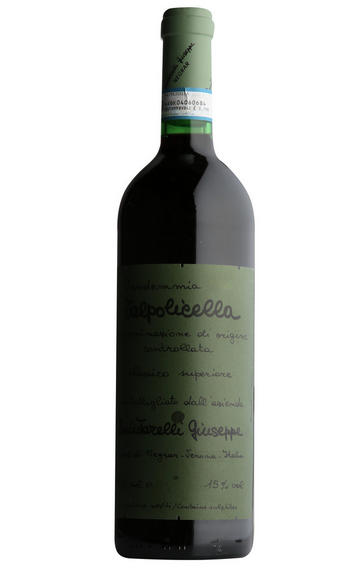
2004 Amarone della Valpolicella Classico, Giuseppe Quintarelli, Veneto, Italy
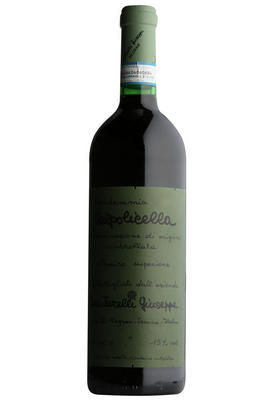
Critics reviews
Monica Larner - Wine Advocate - eRobertParker.com #216 Dec 2014
About this WINE
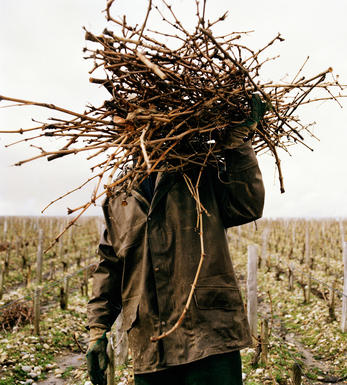
Giuseppe Quintarelli
The estate of Giuseppe Quintarelli, located in the Veneto region of north-eastern Italy produces Valpolicellas, Reciotos and Amarones that are revered by oenophiles all over the world. The estate dates back to 1924 and but it was Giuseppe Quintarelli (known as Bepi, in charge from the mid-1950s until his death in 2012) who drove its success. In an era that emphasized mass production over attention to detail, Quintarelli made wines without compromise, with labour-intensive methods and painstaking attention in the vineyard.
Giuseppe established the winery as the source of the most traditional styles of Amarone, ageing it for seven years in Slavonian oak; the result is one of the most complex wines produced in Italy.Quintarelli wines are still the unmatched benchmark for Amarone.
Even though he is traditional in his Amarone production, it does not follow that Giuseppe is afraid of innovation. As well as the excellent Amarone, he produces an excellent dry white wine called Bianco Secco and a flamboyant, but powerful blend of Cabernet Sauvignon, Cabernet Franc and Corvina labelled Primo Fiore and sought after as any cult Cabernet.
Giuseppe’s daughter, Fiorenza, her husband, Giampaolo Grigoli, and their children Francesco and Lorenzo, are currently involved in running the winery.
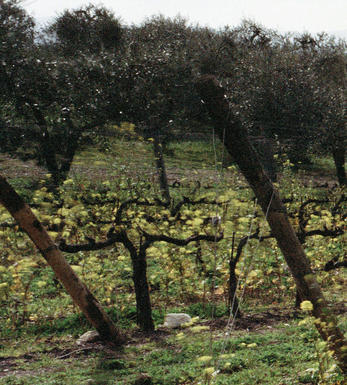
Amarone della Valpolicella
Amarone della Valpollicella, a leading Venetian wine DOC, now represents 25% of the total production of Valpolicella wine. Amarone della Valpolicella (normally known more snappily as "Amarone") is made using partially shrivelled fruit that has been left to dry, and produces a rich, full-bodied, unfortified, dry red wine.
Amarone's sweeter sibling Recioto della Valpolicella can trace its history back to the Romans, when Pliny, Virgil and Columella made reference to a wine called "Recitium", however, Amarone was not seen until it was first sold in 1936 and was only officially recognised in 1953. Its birth was apparently the result of a producer forgetting to take his Recioto out of barrel, allowing it to ferment to dryness.
Located between Lake Garda and Venice, the Amarone zone is concentrated around the villages of Negrar, Fumane, Marano, Sant Ambroglio and San Pietro-in-Cariano. Its vines grow on stony, volcanic, calcareous sites in the foothills of the Lessini Mountains at between 150m and 350m above sea level. With Lake Garda and the Adriatic Sea nearby, the region's climate is relatively temperate although the proximity of the Alps brings with it the constant threat of hail (as occurred in 2007).
Corvina (aka Veronese) and Corvinone must constitute 80% of the blend, with Rondinella, Molinara and Croatina accounting for the remaining 20%. Once harvested, the clean fruit is traditionally dried in airy lofts for 100-120 days over the winter, a process known as "appassimento". This typically results in an increase of sugar by 27% and dry extract by 28% while malic acid levels reduce by 66% with tartaric acid levels remaining the same. Importantly, evaporation leads to a 65% reduction in must weight (although this is less in modern purpose-built "lofts") aided and abetted by the development of noble rot (aka "botrytis cinerea"). The desiccated fruit is pressed in the March following the October harvest and fermented in Slavonian or French oak.
It is then aged for up to 7 years (as is the case for the wines of Giuseppe Quintarelli). The left-over grape pomace is recycled, with Valpolicella Classicopassed through it to produce Valpolicella Ripasso. The legal minimum alcohol level for Amarone is 14% but most easily surpass 15%. The best wines are dense and richly textured - reminiscent of Vintage Port but drier and without the fortification! - with lively acidity, supple tannins and lovely flavours of Morello cherry, roast coffee and chocolate.
Recommended producers: Bussola, Corte Sant' Alda, Dal Forno and Giuseppe Quintarelli.
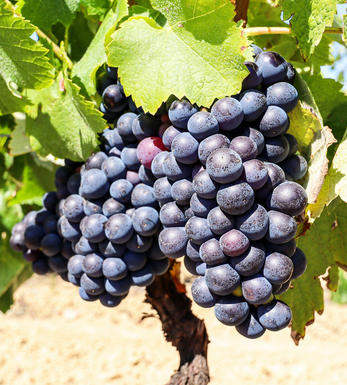
Corvina, Corvinone blend
Corvina is widely grown on the Veneto shore of Lake Garda and the hills of Valpolicella to the north and north-east of Verona. Sometimes known as Corvina Veronese, it is blended with Rondinella and Molinara to produce Valpolicella and Bardolino. It can be a tricky grape to cultivate, as it ripens late and is prone to rot if affected by rains at harvest time. It is a high-yielding grape and quality is very dependent on keeping yields low.
Corvina-based red wines can range in style from a light, cherryish red to the rich, port-like Recioto and Amarone Valpolicellas. Most Valpolicella from the plains is pale and insipid, and bears little comparison with Valpolicella Classico from the hills. Some producers such as Allegrini are now producing very high quality 100% Corvina wines.


Buying options
Add to wishlist
Description
The beautifully refined 2004 Amarone della Valpolicella Classico Selezione Giuseppe Quintarelli captures the magic and the grace of classic Quintarelli. The only problem is getting your hands on one of these very hard to find bottles. The bouquet is delicate and feminine with enduring tones of wild berry, forest floor, balsam herb, cola and sweet almond. The wine's texture is silky and long with an impressive level of polish on the tannins. The 2004 vintage is especially prone to long aging.
Monica Larner - Wine Advocate - eRobertParker.com #216 Dec 2014
wine at a glance
Delivery and quality guarantee